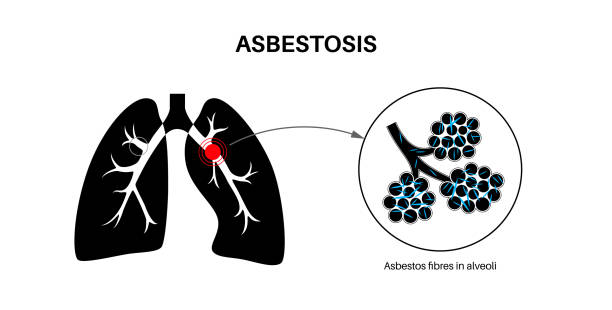Prognosis For Asbestosis Symptoms

The prognosis for individuals diagnosed with asbestos exposure varies significantly, depending on several factors.
Asbestosis is a progressive disease, meaning it can worsen over time, especially if the individual continues to be exposed to asbestos dust or other lung irritants.
Life expectancy with asbestosis can range widely. Some patients may live for decades after diagnosis, while for others, the progression of the disease can lead to significant health complications earlier.
Studies have shown that the median survival time after diagnosis can be around 10 years, but this number is highly variable.
It’s important to note that asbestosis itself is not fatal but it can lead to complications such as respiratory failure, and pulmonary hypertension which can be directly life-threatening.
Factors Affecting Asbestosis Life Expectancy

The average life expectancy of asbestosis patients is influenced by a variety of factors, which can either mitigate the disease’s progression or exacerbate its impact on the patient’s health.
Understanding these factors is crucial for both patients and healthcare providers to manage the condition effectively and to tailor treatment plans that address specific needs and risks.
Here’s an expanded look at the primary factors affecting the survival rate of the patient:
Early Asbestosis Diagnosis And Management
Early Detection
Identifying asbestosis at an early stage can significantly influence the effectiveness of treatment options. Early intervention can slow disease progression, improve symptoms, and enhance quality of life.
Management Strategies
Treatment plans may include pulmonary rehabilitation, medications to ease breathing and oxygen therapy. There is no cure for asbestosis, but managing symptoms can lead to a more comfortable and prolonged life.
Lifestyle Factors

Smoking Cessation
Smoking is a critical factor that can worsen asbestosis. It accelerates lung damage and increases the risk of developing lung cancer.
Quitting smoking immediately upon diagnosis—or better yet, before diagnosis—can halt the rapid progression of lung function decline.
Environmental Control
Avoiding prolonged exposure to asbestos and other irritants (like dust and chemical fumes) is essential. Protective measures in the workplace and ensuring a clean home environment can help reduce symptom flare-ups.
Comorbid Conditions
Other Asbestos Related Diseases
The presence of additional lung conditions such as chronic obstructive pulmonary disease (COPD) or pulmonary fibrosis can complicate asbestosis, potentially worsening the prognosis and can lead to asbestos-related lung cancer.
Overall Health Condition
General health and the presence of other chronic conditions also play a role in the prognosis. Healthier individuals may have a better capacity to manage asbestosis and relieve symptoms.
Regular Monitoring and Healthcare

Ongoing Care
Regular check-ups with healthcare providers who specialize in lung diseases can help in managing asbestosis, adjust treatments as necessary, and address any emerging health issues promptly.
Pulmonary Function Tests
These lung function tests are crucial for assessing the health of the lungs over time and making informed decisions about the treatment and management of asbestosis.
In Summary
While asbestosis is a serious condition with no cure, the factors mentioned above highlight the importance of a comprehensive approach to management.
The variability in individual experiences with asbestosis underscores the need for personalized care plans and ongoing research to enhance understanding and treatment of the disease.

